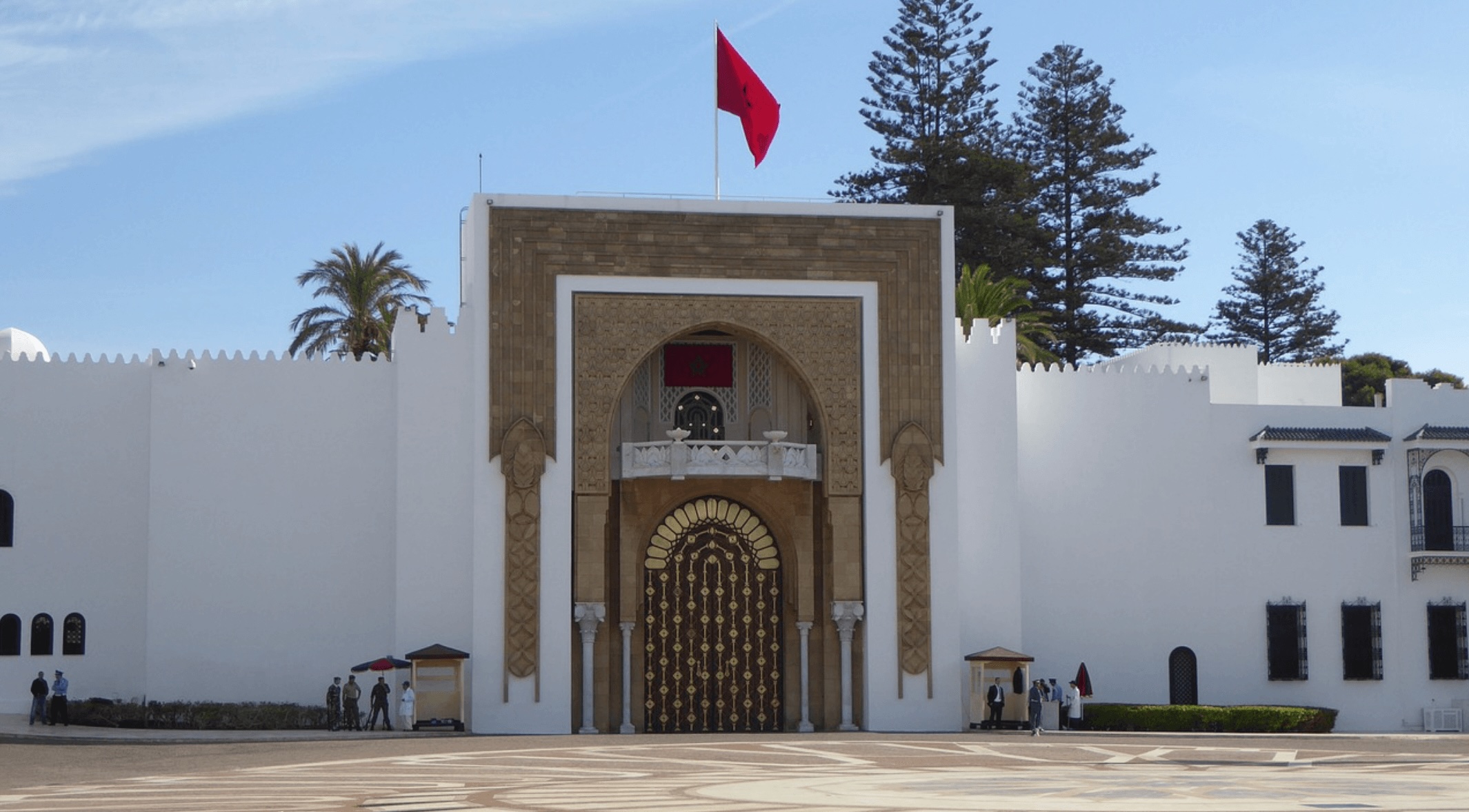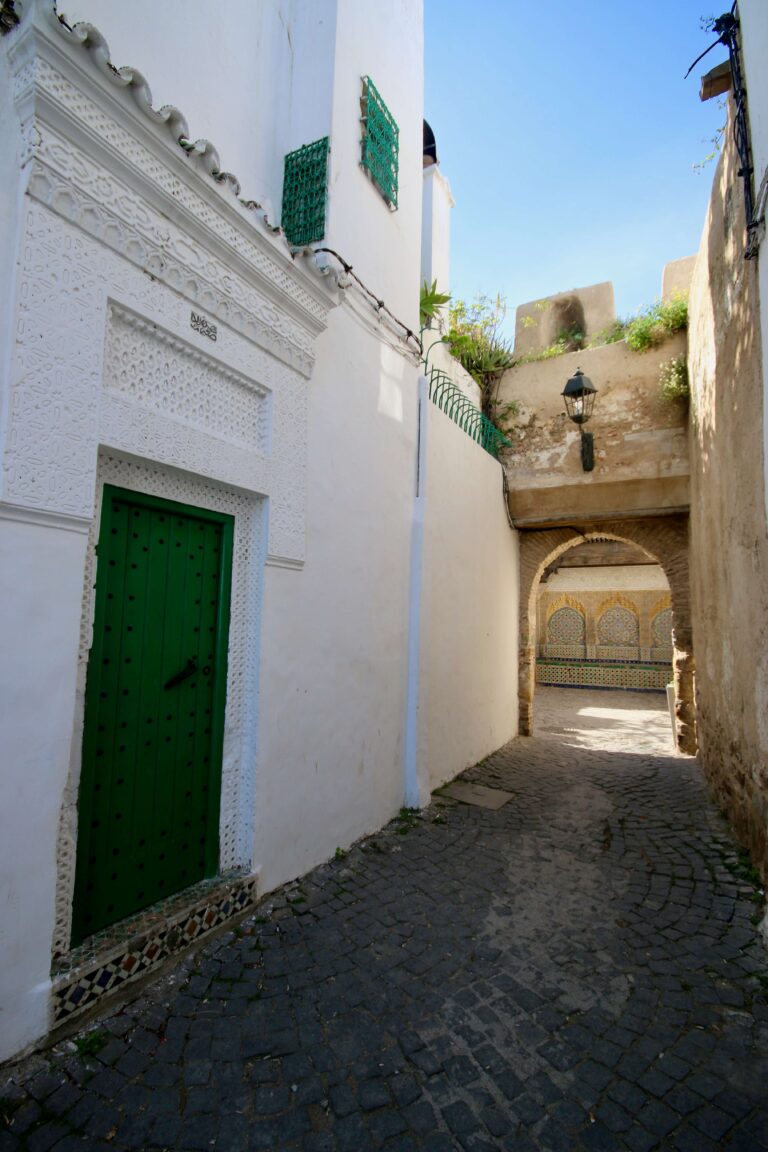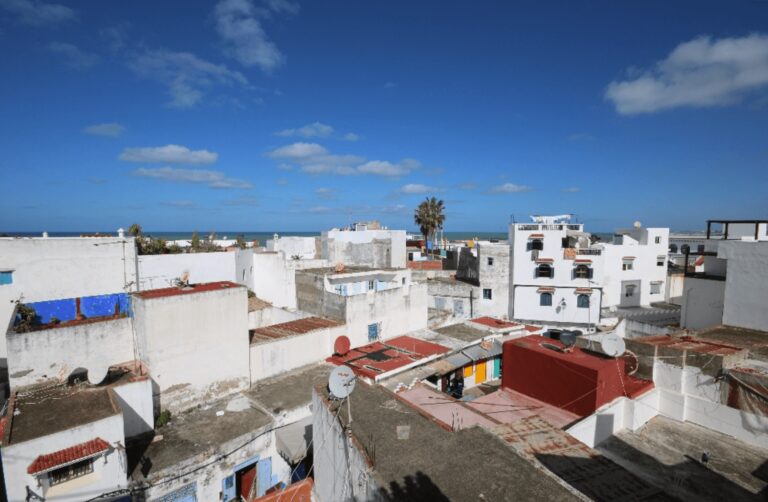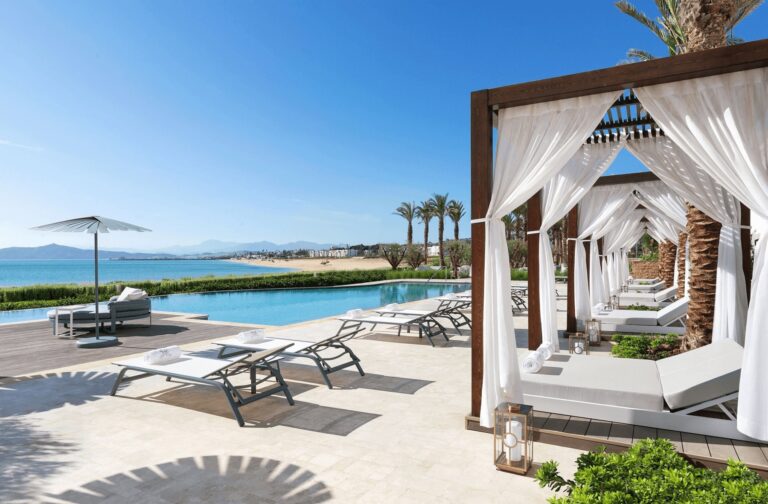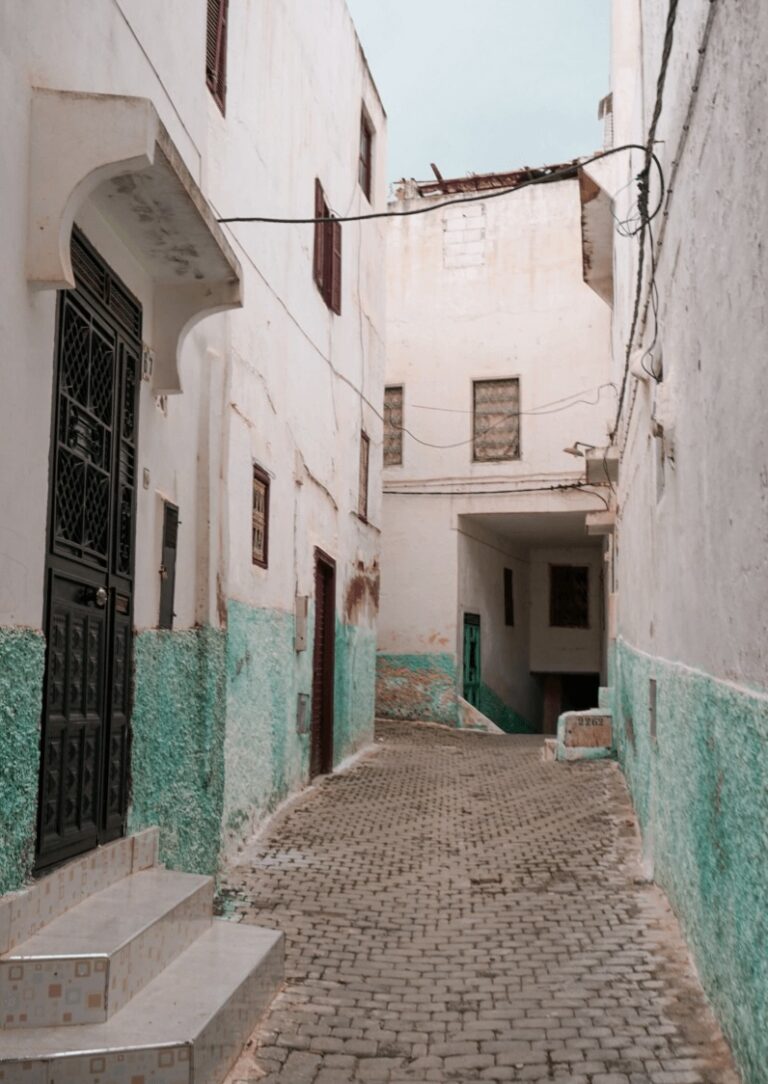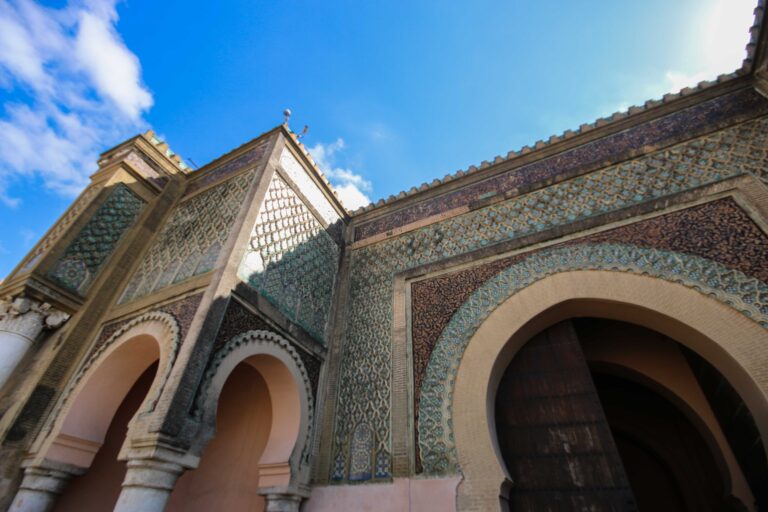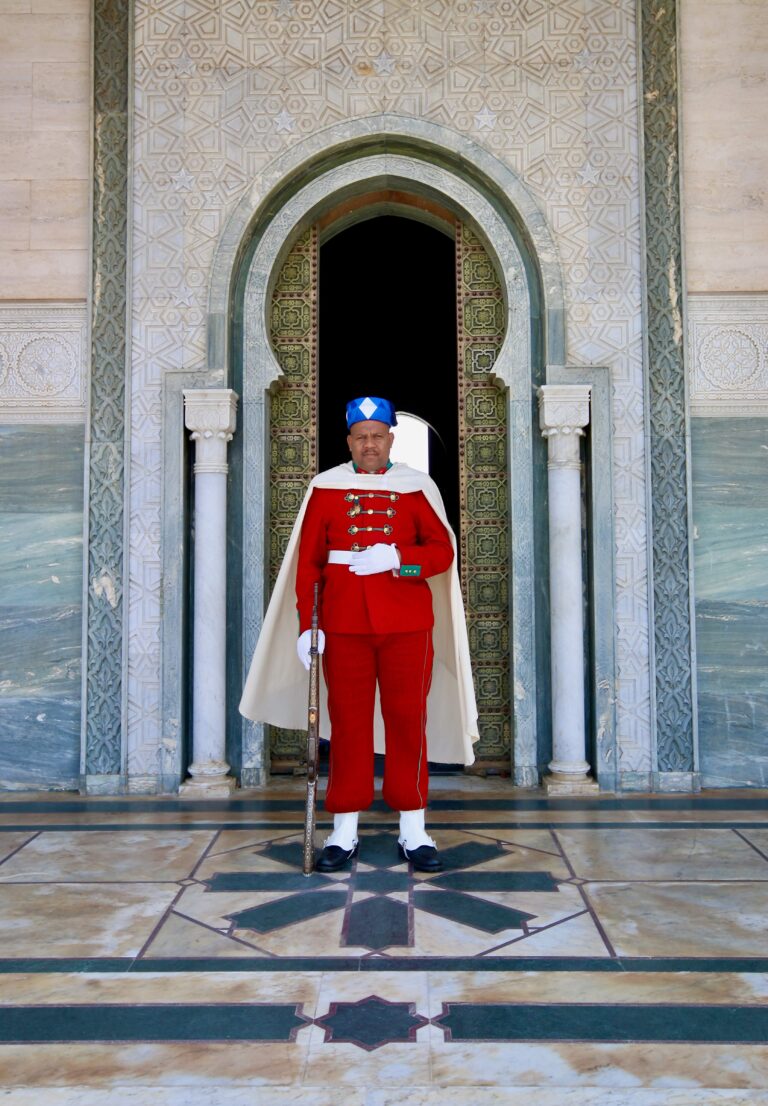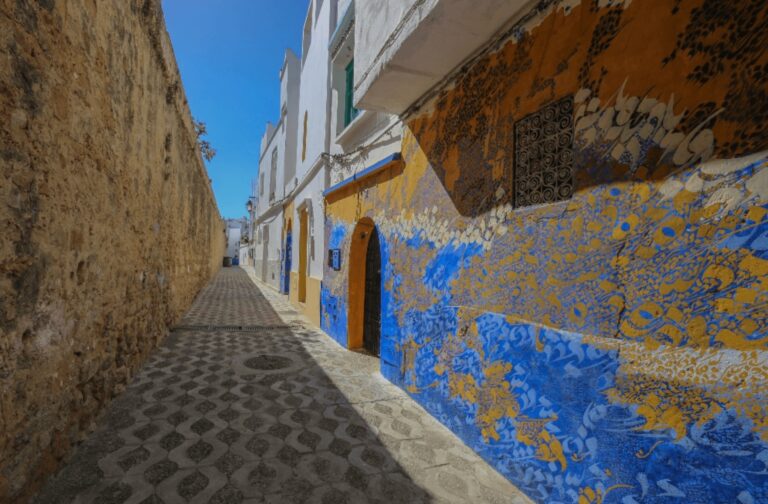5 of the Best Museums in Tetouan
If you’re travelling to this UNESCO-listed city, discover 5 of the best museums in Tetouan. Many occupy beautifully restored buildings that are attractions in their own right.
Tetouan might not be as well-known amongst international tourists as its more famous neighbour, Tangier. But for me, it’s a destination that is well worth exploring.
It flourished in the 15th century with the arrival of Andalusian refugees fleeing the fall of Granada. This new wave of migrants brought with them architectural and artistic traditions that would shape the city.
Today, Tetouan remains deeply connected to its storied past. For the architecture aficionado or culture vulture, it is a destination that simply begs to be explored. It also boasts some exceptional museums for such a small city, covering everything from archaeology to art and religious heritage.
In this article, I’ll introduce 5 of the best museums in Tetouan to add to your itinerary. Many occupy beautifully restored buildings that are attractions in their own right.
For more information about visiting Tetouan, check out my Essential Travel Guide to Tetouan.
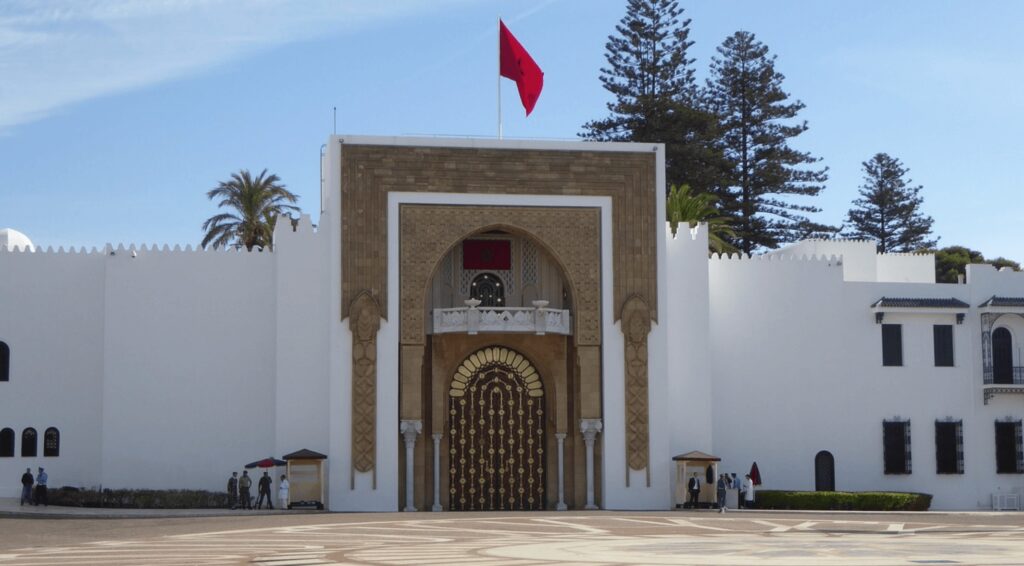
Disclosure: This article contains affiliate links, meaning I earn a small commission when you make a purchase. Affiliate links cost you nothing and ensure my content stays free!
Tetouan Archaeological Museum
Dedicated to Morocco’s pre-historic and pre-Islamic periods, the Tetouan Archaeological Museum is an absolute “must” for history buffs. Its collection includes everything from ancient pottery and jewellery to stone engravings and everyday tools.
All provide invaluable insights into the development of the Roman, Phoenician, Mauritanian and Punic civilisations that once flourished in the region.
Many of the museum’s most prized possessions hail from the Roman city of Lixus. This once-thriving hub of civilisation was located north of the modern seaport of Larache.
Additionally, the museum houses artefacts recovered from the Punic-Mauri site of Tamuda. This was excavated by César Luis de Montalbán in the 1920s.
In recent years, the significance of Tetouan Museum’s holdings has been further underscored. Five of its objects have been added to Morocco’s national heritage list. Not to miss are the “Three Graces” mosaic and the Sumerian statue discovered near the coastal town of Asilah.
Over the years, its role as a custodian of Morocco’s ancient history has only grown. Today, it has garnered a reputation as one of the best museums in Tetouan. This was evidenced in 2022 by its participation in a binational exhibition at the National Archaeological Museum in Madrid.
Opening hours of the Tetouan Archaeological Museum: 10 am to 6 pm (closed Tuesdays)
Entrance fee for the Tetouan Archaeological Museum: 10 dh
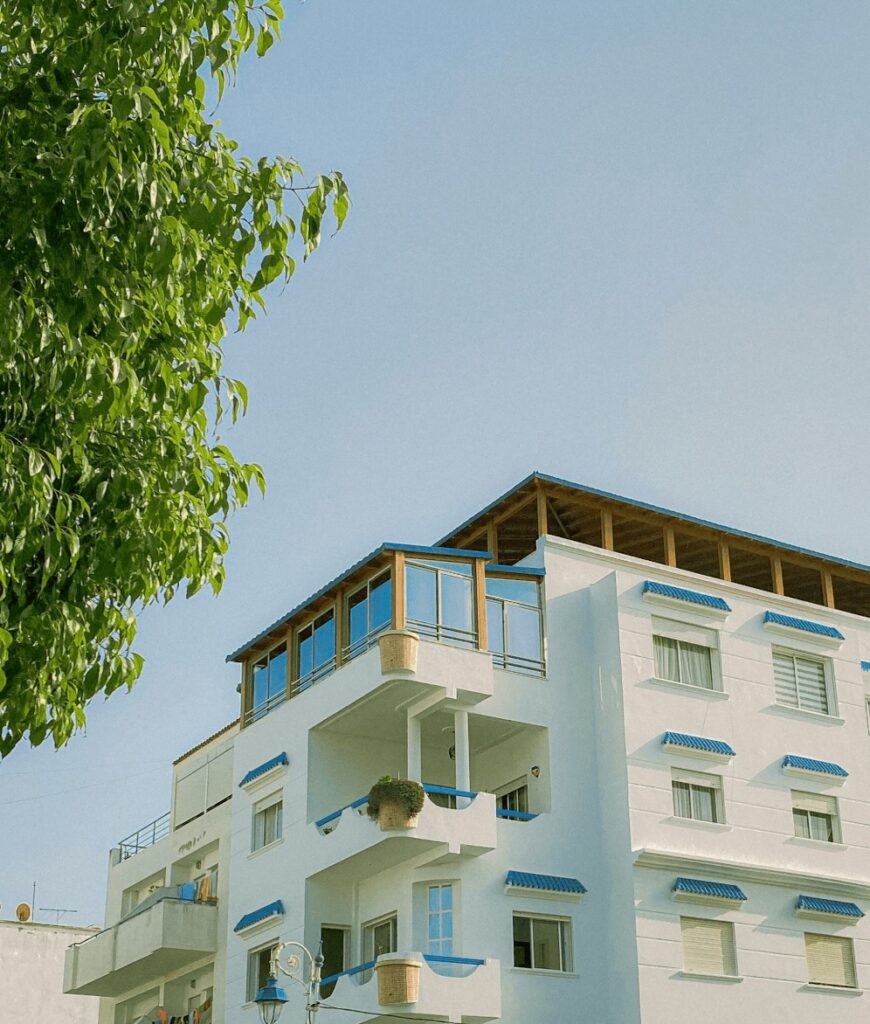
Bab El Oqla Museum
Also known as the Tetouan Ethnographic Museum, this highly-rated cultural institution is named after one of the city’s seven historic gates. It is a captivating repository of Morocco’s cultural heritage, exploring the daily lives and artistic traditions of the local people.
The museum’s exhibits are divided into three distinct sections, with signage provided in both Arabic and French.
The first section delves into the geographical and historical evolution of Tetouan. It traces its reconstruction in the 15th century through the period of Spanish influence and the city’s golden age of prosperity during the 16th and 17th centuries.
The second section transports you into the heart of the old medina, with beautiful zellige tilework and carved doors on display. Keep an eye out for the exhibit dedicated to the “Squndo”, a 15th-century water distribution system.
The museum’s third and final section features examples of Moroccan arts and crafts. These include traditional musical instruments, exquisite jewellery and colourful djellabas. A particular highlight is the opulently decorated “El Bahja”, making this one of the best museums in Tetouan.
Guides are available at the entrance or you can explore the collection independently.
Opening hours of Bab El Oqla Museum: 10 am to 6 pm (closed Tuesdays)
Entrance fee for Bab El Oqla Museum: 30 dh
Dar El Oddi
This beautiful riad is owned by the wealthy El Oddi family, who have generously opened it to the public as a cultural centre. It houses a permanent exhibition titled “Visions of Tetouan”, showcasing the evolution and unique character of the city from the 16th to 20th centuries.
On display are black and white photographs, maps and postcards, as well as vintage stamps and artworks.
At the heart of the experience is the riad itself. It is a beautifully restored example of Tetouan’s Andalusian-influenced architecture. The ornate tilework, intricate woodcarvings and elegant courtyards are divine!
A highlight is undoubtedly the traditional family kitchen on the ground floor. Understandably, it offers a glimpse into the culinary traditions of Tetouan’s residents.
Throughout Dar El Oddi’s rooms and hallways, a diversity of artistic perspectives is on display. These include the work of local artists to the visions of curious travellers who have passed through the city over the centuries. For me, this is definitely one of the best museums in Tetouan!
Before leaving, be sure to climb up to the rooftop terrace for wonderful views across the city.
Opening hours of Dar El Oddi: 10 am to 6:30 pm (closed Tuesdays)
Entrance fee for Dar El Oddi: 25 dh

Tetouan Modern Art Centre
Tetouan has long been a magnet for artists, drawn to its creative energy and the breathtaking natural beauty of the Rif Mountains. Home to one of only two fine arts schools in Morocco, the city has nurtured generations of talented painters, sculptors and other artists over the years.
Drawing on this legacy, the Tetouan Modern Art Centre showcases the city’s artistic traditions. It is housed within a 20th-century building that was once the headquarters of the local railway station.
Designed in the “New Arab” style by the Spanish architect Julio Rodriguez Roda, it was transformed in the 2000s into the cultural complex seen today.
The Tetouan Modern Art Centre features four permanent exhibition halls. Together, they trace the evolution of art in northern Morocco through the work of three successive generations.
It includes several works by Mariano Bertuchi, renowned for his paintings of Moroccan landscapes and everyday life. In total, there are more than 200 paintings and sculptures on display.
Opening hours of the Tetouan Modern Art Centre: 9:30 am to 1 pm and 2 pm to 5 pm Monday to Friday; 9:30 am to 2 pm Saturday (closed Sundays)
Entrance fee for the Tetouan Modern Art Centre: Free
Madrasa Loukach
Thsi religious school was constructed in 1758 under the orders of the Alawite Sultan Mohammed bin Abdallah. It was originally designed to accommodate students from surrounding regions who came to study theology.
For over two centuries, the madrasa fulfilled this educational purpose, welcoming up to 100 students at a time. This cemented its reputation as one of the most renowned religious institutions in the area.
Architecturally, the madrasa is a striking example of the Moorish style. It features a rectangular layout adorned with columns, arches and a garden courtyard that was added in the early 20th century.
The building has two distinct entrances – one central and one on the side. Apparently, this allowed for efficient student traffic flow as they moved between their dormitories, classrooms and communal spaces.
After the madrasa closed down in the 1980s, the Tetouan-based architect Aamiar Mohammed Anass oversaw a comprehensive rehabilitation project. This transformed the site into a museum showcasing the city’s religious heritage.
In addition to learning about traditional Islamic education, rituals and cultural practices, you can discover how they were cultivated within the madrasa. The Museum of Religious Heritage is a wonderful place to stroll independently and is an architectural treasure in its own right.
Opening hours of Madrasa Loukach: 10 am to 5 pm
Entrance fee for Madrasa Loukach: Free

PLAN YOUR TRIP WITH MY FAVOURITE RESOURCES:
Find hotels via Booking
Book tours and attractions via Viator or GetYourGuide
Find a rental car via Discover Cars
Book flights via Kiwi or Booking
Search for buses and trains via 12Go or Omio
Get travel insurance via SafetyWing
Buy a digital eSIM with Airalo
By purchasing through my links, you’ll be supporting my website at no additional cost to you
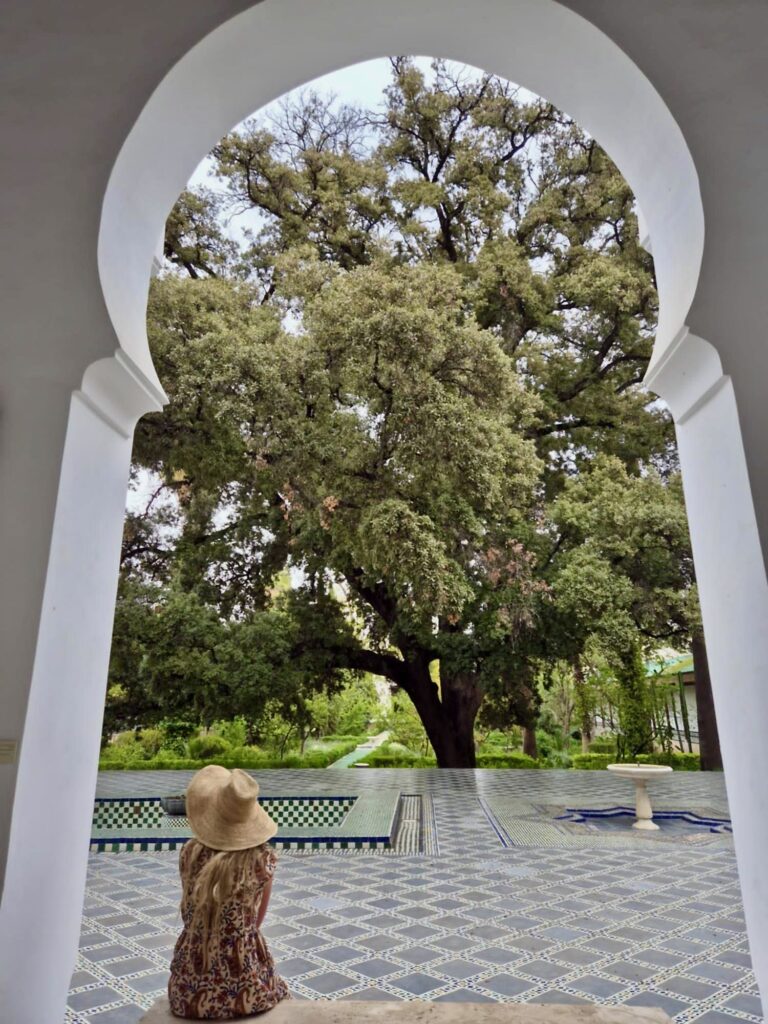
About Me
I’m Malika, a global traveller who first visited Morocco in 2014 before marrying a local and settling down in a little village on the Atlantic coast. Over the years, I’ve developed an intense love for Morocco, its incredible landscapes, storied cities and the exceptionally generous hospitality of its people.
Malika in Morocco is a place to share my years of experience exploring the country, from north to south and from the Atlantic Ocean to the Sahara Desert. As a resource for travellers visiting Morocco, I want to encourage others to experience this captivating destination the way they desire, whether that’s independently or under the expert guidance of local tour operators.
I believe strongly in supporting responsible and sustainable tourism initiatives while inspiring travel experiences that are life-impacting and mutually beneficial for both travellers and locals.
-
A Historic Andalusian Port: Essential Travel Guide to Tetouan
Looking for the best things to do in Tetouan or highly recommended places to stay? Discover the ideal time to visit, tips for getting around and the best Tetouan tours in this essential travel guide. Clustered along the slopes of the Martil Valley, Tetouan is a historically rich city on Morocco’s Mediterranean coastline. While not…
-
6 Best Tours in Tangier: Culture + Food + Adventure
Looking for the best tours in Tangier? Explore this curated collection of experiences, including cooking classes, guided walks and multi-day adventures to Chefchaouen and Fes. With its blue shuttered windows and whitewashed buildings cascading down to the sea, Tangier exudes a Mediterranean vibe unique for a Moroccan city. Overlooking the Strait of Gibraltar, it has…
-
13 Best Hotels in Tangier: Morocco’s Northern Gateway
Looking for the best hotels in Tangier? Explore this curated collection of highly rated stays, including luxury resorts and budget-friendly hostels. Perched on Morocco’s northernmost edge, Tangier is a cosmopolitan city that has welcomed travellers for centuries. It continues to enchant visitors today with its blend of African, Arab and European influences, not to mention…
-
10 Best Places to Stay in Asilah for All Travel Styles
Looking for the best hotels in Asilah? Browse this curated collection of family-friendly dars, beachside cottages and eco-friendly retreats to find the best places to stay in Asilah. Centred around a whitewashed medina, Asilah is an atmospheric coastal town and one of my favourite places to stay in northern Morocco. It’s brimming with incredible street…
-
11 Best Hotels in Tangier With a Pool for a Summer Stay
Planning a summer stay in Morocco’s northwest? Discover 11 of the best hotels in Tangier with a pool where you can cool off during the heat of the day. With its sun-drenched coastal setting where the Atlantic and Mediterranean meet, Tangier is a gateway destination and many travellers’ first impression of Morocco. It boasts a…
-
A Northern Gateway: Essential Travel Guide to Tangier
Looking for the best things to do in Tangier or highly recommended places to stay? Discover the ideal time to visit, tips for getting around and the best tours in this essential travel guide to Tangier. Just an hour’s ferry ride from Spain, Tangier has long been a hub where European and African cultures converge….
